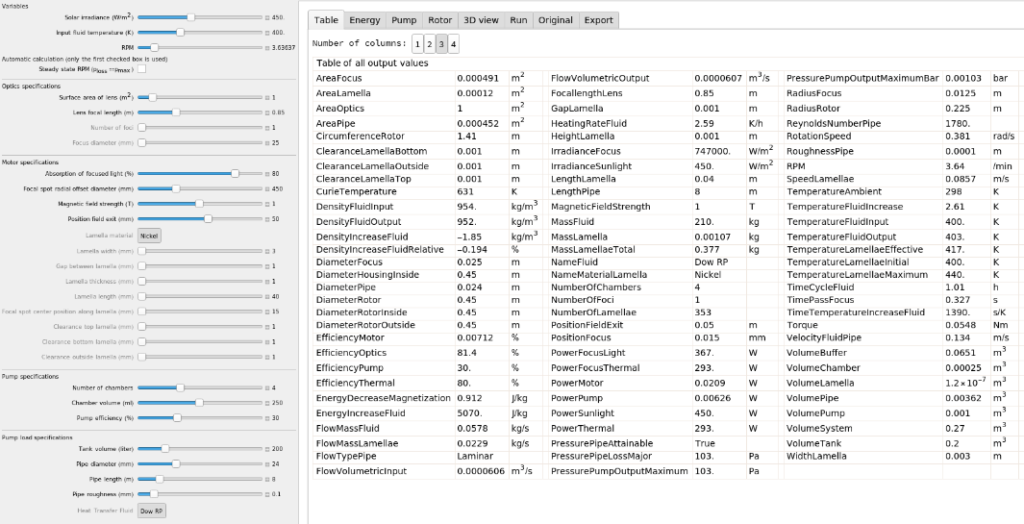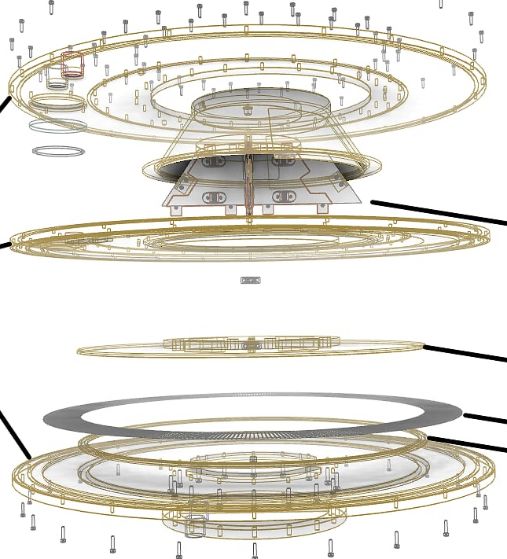Alliance
These years brought hardships, friendships and even a fellowship of four Knights. We called the alliance Helios Nova, New Sun of God, or New bright star. It stands for a new technique to handle direct sunlight, catch it, transform it, and transport it to a storage container and release it when needed.
In order to make the most out of every photon that hits the surface of our lens, we simply follow the path of it when we bend and shape its trajectory into a compressed version of it and all fellow photons that simultaneously hit the same surface. Soon, we will be able to compress about 87% of energy from direct sunlight and use that energy to heat a blade-like rotor submerged into heat-transfer-fluid.
The compressed bundle of heat energy evaporates into the fluid through the blades, that simultaneously act as the propellers for the fluid that cools them down. The resulting flow drives a heat circuit that is connected to an isolated storage accumulator. During the period that the fluid temperature is below its maximum permissible temperature, the rotor increases gradually in speed until its maximum permissible speed. When the core volume reaches its maximum temperature, the system is fully loaded. One can now use this system to heat up stuff until the entire system has released its temperature below a useful temperature.
If, for example, this temperature is set at 300°C, one can use that temperature for a period when he reverses the flow of the transport fluid. But transport and containment costs energy, heat loss through the mantle, electric pumping, and fluid circulation are some of the examples of loss and cost. Nevertheless, there is also gain. Picturing a barrel volume for example, filled with 300°C, how much energy is then stored and applicable for consuming, and what is consuming in this manor?
Theoretical model
Take for example the oven, baking a pizza takes approximately 20 minutes at 180°C temperature within a small confined space. But to produce the electricity, the industry uses mainly fossil fuels and uranium. Wind and solar panels make up for the rest. In the main power generation sense, conversion from heat energy into electric energy costs a lot of fuel in multiple areas. Then, when the power is in the electric state, converting back into heat energy within the oven costs an extra amount of energy loss. Ergo, we transport this electric power only to use it to enable the oven to heat up until its operational temperature, and just as before, transportation also has a cost. This is where our system differs from the conventional thought of dealing with energy. To reach that same temperature, our oven needs a certain amount of fluid per second from our storage and uses no additional electricity except for measuring temperature and pumping the fluid. Skip energy conversion loss from heat into electricity, skip electric conversion loss into heat energy. How many pizzas could one bake with a barrel load of our technique versus the double loss technique of our industry, and how big is then the improvement for our environment.
This is where our mathematical model comes into play, it is built with the help of optical specialists, with the optics design and physics/mathematics expertise coming from Physionary and the optical 3D printing support from Luximprint.
It took some time and effort to construct, but finally gave us the possibility to connect the dots for a first time, and it is speaking math, physics and intuition!


Our goal is set at enabling decentral end users (for domestic application) to accumulate this heat energy and put it to use for hot water production, heating, baking, washing, cleaning and generating electricity just enough for lighting, pumping, and measuring the fluid state. When the system is depleted from its heat energy, conventional energy support, but
also alternative heating stoves are some of the possible backup systems. Industrial applications are possible as well and would take less effort to assemble, but the diversity of the domestic type, for the moment, is preferred.